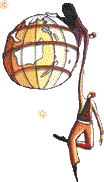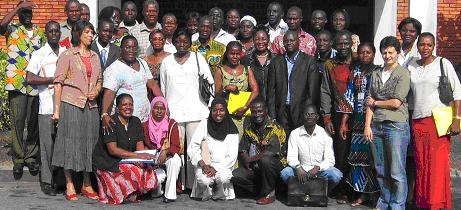Often, we are asked: "What is it you actually do, at the School of Peace?" as if meaning to say that one really wonders what it is, about this beautiful Utopia, that is concrete, palpable, and therefore, somehow, effective. The answer could be: "Since the exhibition ’Warpaths or How to Avoid Them’ was first set up and then began to circulate, we lifted its models 1, 2, 3, and henceforth 4 and 5, at least 1,000 times in 10 years," … and the total lifted weight now amounts to 208.5 tons! This, to install the show in a total of 247 schools - more particularly, middle schools – town halls, community centers, youth centers, etc., and that for about 200,000 visitors. Besides these anonymous weight-lifting efforts – and who would refuse an occasional helping hand! – what results can all of this have produced, what is the "weight" of an action such as this one?

And this, indeed, is the critical question of the impact of our undertaking, which could remind us of the myth of Sisyphus, condemned for eternity to push a rock up a slope and always see it roll down again before reaching the top. Although the above figures are not negligible, they can still be seen as very low compared with the scope of the task. If we are asking this question today, it is because we are on the eve of our tenth birthday, which deserves to be marked, not for vainglory, but by a necessary assessment that will guide our consideration of our future. What we are referring to, is the development of our educational activity, which is the form in which we completely express our vocation: at the three school levels, at universities, and to respond more generally to everyday human and citizen needs; at our doorstep, but also farther away, as a concrete response to the challenges involved in post-crisis, reconstruction, and reconciliation situations such as those current in the African continent, among others.
In fact, it is not so much all about "doing tons of things" - for that, we haven’t enough resources anyway! - as it is about seeking and implementing, as conscientiously as possible, educational actions that will contribute to prevent outbreaks of violence and conflicts. In the field of peace in general, like on the field of a sports competition in particular, what is important – to use a famous formula – is it not to participate?

Africa Network: Meeting Educational Needs
From September 22 to 26, 2007, a teacher-training seminar on Education for Peace and Non-violence in School was held in Abidjan in partnership with the UA/CI Club and with the financial support of the Organisation Internationale de la Francophonie.

"Should I Go or Shouldn’t I?" in the Ivory Coast
The School of Peace Went ...
by Brigitte Serrano and Dorothée Paulin
Following the purchase of our educational kit "J’y vais, j’y vais pas"(Should I go or shouldn’t I?) by the African Union Club in the Ivory Coast, the School of Peace commissioned us to train about thirty teachers in the Ivory Coast. The goal of the seminar was to form a trainers’ center there, which would spread the training and participate in adapting our kit to the context of the Ivory Coast.
We arrived in a country in the midst of a post-crisis situation, a difficult socioeconomic context, and a very constraining reality on the field for the teachers. Classes often have 80 students in them, and teachers sometimes have to give their classes twice, once to half of them and once to the other. Since the conflict, only the cities of the north have somewhat less students per class.
The training took place in a studious climate and often led to discussions encouraging mutual enhancement and in-depth questions, such as:
 "Is using the rod (corporal punishment) compatible with education for Peace?"
"Is using the rod (corporal punishment) compatible with education for Peace?"
 "Can a child have other rights than obeying adults?"
"Can a child have other rights than obeying adults?"
The discussions made it possible to experiment the mediation protocol and seek the "common basis of evidence" to accept the way others express their thoughts according to their culture, age, etc., and to reach a compromise that can be part of a program in education for "multicultural" peace.
The Principal for extra-curricular activities, a representative of the Ministry of National Education, who opened the seminar, came to attend the closing ceremony and gave each trainee a diploma. She made a commitment to each of them that she would support the adaptation and amplification of our kit as an essential tool for peace education.



